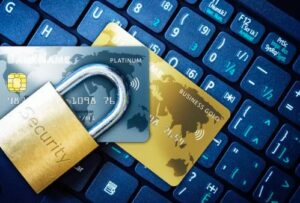In today’s digital age, credit fraud poses a significant threat to consumers, with cybercriminals constantly devising new schemes to exploit vulnerabilities in the financial system. From unauthorized credit card charges to identity theft and phishing scams, the risks of credit fraud are ever-present, requiring individuals to be vigilant and proactive in safeguarding their financial information. In this comprehensive guide, we’ll explore effective strategies to protect yourself from credit fraud, empowering you to mitigate risks and secure your financial well-being.

Understanding Credit Fraud
Types of Credit Fraud
Credit fraud encompasses a wide range of fraudulent activities aimed at obtaining sensitive financial information or unauthorized access to credit accounts. Common types of credit fraud include identity theft, credit card fraud, account takeover fraud, and phishing scams, each presenting unique challenges and risks for consumers.
Impact of Credit Fraud
The consequences of credit fraud can be devastating, resulting in financial losses, damage to credit scores, and emotional distress for victims. In addition to the immediate financial repercussions, victims of credit fraud may also face challenges in resolving fraudulent charges, disputing unauthorized transactions, and restoring their financial stability.
Effective Strategies for Protection
Monitor Your Accounts Regularly
One of the most effective ways to detect and prevent credit fraud is to monitor your credit card and bank accounts regularly for any unauthorized transactions or suspicious activity. Set up account alerts and notifications to receive real-time updates on account activity and be vigilant in reviewing statements for any discrepancies.
Secure Your Personal Information
Protecting your personal information is essential for preventing identity theft and unauthorized access to your financial accounts. Safeguard sensitive information such as social security numbers, account passwords, and credit card details by storing them securely, shredding documents containing personal data, and avoiding sharing sensitive information online or over the phone.
Use Strong Passwords and Security Measures
Strengthen the security of your online accounts by using strong, unique passwords for each account and enabling multi-factor authentication whenever possible. Avoid using easily guessable passwords and regularly update your passwords to reduce the risk of unauthorized access to your accounts.
Be Wary of Phishing Attempts
Exercise caution when responding to unsolicited emails, messages, or phone calls requesting sensitive information or prompting you to click on suspicious links. Phishing scams are a common tactic used by fraudsters to trick individuals into disclosing personal or financial information, so be skeptical of unexpected requests for information and verify the legitimacy of communication before taking any action.
Keep Your Devices Secure
Ensure that your devices, including computers, smartphones, and tablets, are protected with up-to-date security software and antivirus programs. Regularly install software updates and security patches. This is to patch known vulnerabilities and reduce the risk of malware infections or data breaches.
Freeze Your Credit Report
Consider placing a credit freeze on your credit report to restrict access to your credit information. As well as to prevent unauthorized individuals from opening new accounts in your name. A credit freeze can provide an added layer of protection against identity theft and unauthorized credit applications. Effectively giving you greater control over who can access your credit information.
Educate Yourself About Fraud Prevention
Stay informed about the latest trends and techniques used by fraudsters to perpetrate card fraud. Be sure to educate yourself about best practices for fraud prevention. Take advantage of resources provided by financial institutions, government agencies, and consumer advocacy groups. Use them to learn more about protecting yourself from credit card breaks and staying vigilant against emerging threats.
Taking Action Against Credit Fraud
Report Suspicious Activity Promptly
If you suspect that you’ve been a victim of credit fraud or identity theft, take immediate action. Be sure to report the incident to your financial institution and relevant authorities. Contact your bank or credit card issuer to report unauthorized transactions. To dispute fraudulent charges, and to request assistance in securing your accounts.
File a Fraud Alert or Identity Theft Report
Consider filing a fraud alert or identity theft report with the major credit bureaus. This is to alert lenders and creditors to the potential risk of fraudulent activity associated with your identity. A fraud alert can notify creditors to take extra precautions when processing credit applications in your name. An identity theft report can provide documentation of the incident for future reference.
Monitor Your Credit Report Regularly
Regularly review your credit report from the major credit bureaus. This is to check for any unauthorized accounts, inquiries, or other signs of fraudulent activity. By monitoring your credit report regularly, you can identify and address any discrepancies. Along with any suspicious activity, well before it escalates into a larger problem.
Conclusion
Protecting yourself from credit fraud requires a proactive approach and a combination of vigilance, awareness, and effective security measures. By staying informed about common fraud tactics, securing your personal information, and monitoring your accounts regularly. You can minimize the risk of falling victim to credit fraud and safeguard your financial well-being in an increasingly digital world.

